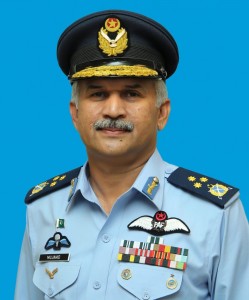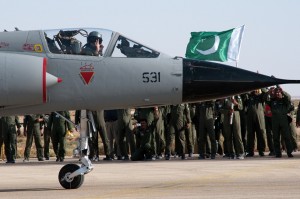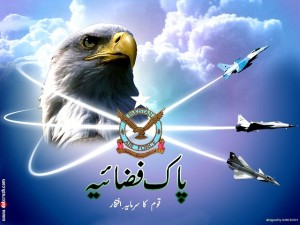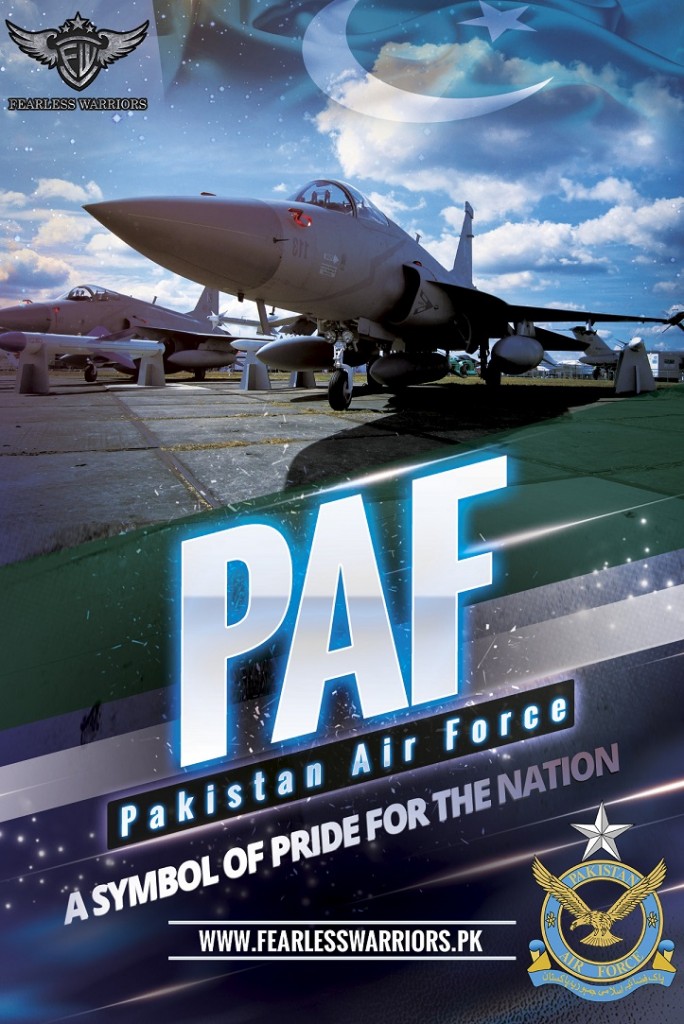Pakistan Air Force
Groomed to be second to none?
Air Commodore M. Adnan Khan SI (M)
“[W]hether they receive five [Rafales] or 500, we are fine. We are absolutely ready and we have no doubt on our capability and we have proven this so it’s (the jets) not going to make much of a difference.”
This statement of Director General of the Inter-Services Public Relations (ISPR) has, no doubt, boosted the confidence of the Pakistani nation. Pakistan Air Force has responded to the call of nation in times of need and shooting down an intruder on 27 Feb. 2019 is a proof to that. Anti-Pakistan think tanks and strategists are convinced that Pakistan and its air force are synonymous. Intrigues of injecting virus of anti-Pakistan sentiments in PAF personnel have remained unsuccessful till date, and will remain so ever. PAF ingrains the country’s love in its personnel like a Pakistani mother shaping a patriot in her lap.
Muslims have dominant marks in flying history of the Subcontinent, by understanding the training and grooming concepts. Commissioned on 29 September 1929, Wing Commander Aizad Baksh Awan was the first Muslim cadet recruited even before the creation of Royal Indian Air Force (RIAF) in 1932. He was also sent to Cranwell (UK) for training, along with five other Indian cadets in 1930.
First flying station of Royal Pakistan Air Force (RPAF) was established at Risalpur on 15 Aug. 1947. Wing Commander Asghar Khan, later to become the first Chief of the PAF, took over as the first Officer Commanding of the school. First flying training school at Risalpur was established on 15 Sep. 1947. First flight from this school took off on 22 Sep. 1947, with Flight Lieutenant Khyber Khan and the student pilot Akhtar on board. The first course passed out on 2 January 1948 with four officer cadets.
PAF was known as Royal Pakistan Air Force (RPAF) till 1957, when it was renamed as Pakistan Air Force (PAF). RPAF inherited trustworthy instructor-trainee legacy. On 8 Sep. 1947, a party was constituted to ferry eight Tiger Moths from Jodhpur (India) to Risalpur (Pakistan). The route was a difficult terrain which had nine stopovers till Risalpur. RPAF trusted its cadets and included six officer cadets along with three officers. These cadets had less than 100 hours of flying experience.
Training and grooming remained top priority since day 1 in PAF. In April 1948, Flight Lieutenant Muhammad Waseem Khan was sent to UK for “All-Purpose Instructors’ Course’. He almost won the coveted Clarkson Aerobatic Trophy. Next year, Flight Lieutenant Fawad Shahid Hussain won the first position in the “Pilot Attack Instructors’ Course” at Central Gunnery School at Leconsfield. He also set a Commonwealth record in air-to-air shooting.
For induction of cadets and trainees, selection criteria were strict and only men of integrity and honesty were selected through a robust systematic process. These young men were trained and groomed on principles of loyalty and discipline. Anyone found below these standards is immediately shunted out.
For sound training and grooming, pioneers established two schools in 1953, a pre-apprentice school at Lower Topa and pre-cadet school at Sargodha. Lower Topa was later merged into Sargodha school. UK’s Air Service Training Ltd., Hamble, was contracted to provide the entire teaching staff. Pre-cadet training was started from 7th class and ended after five years with an Overseas Cambridge Board examination of Cambridge University. After Mr Eric Sprawson, the founding principal of the school, Mr Hugh Catchpole was appointed its principal in 1958. He served till 1967, when the school was elevated to the level of a college.
PAF College Sargodha focused on education with a wide range of intellectual activities. In the education field, it had commendable standards. The institution inculcated the sense of self-reliance, patriotism, confidence and moral values in its students who would become fighters and leaders. Extracurricular interests were paid attention with classroom instructions, sports, debates and public speaking to shape a personality required by PAF. Students’ on-duty and off-duty activities are merged into one whole through suggestions and motivations. Qualities most aspired here are honour, truth, honesty, courage, ambition and dynamism. Visit to dining hall teaches them table manners and how to conduct a table talk. Games are aimed at learning the spirit of life, i.e. body, brain and soul work together to form a personality.
Today, PAF training institutions work on planned training programs. PAF College Sargodha, PAF Academy Risalpur, College of Aeronautical Engineering (CAE), Primary Flying Training (PFT) phase, Basic Flying Training (BFT) phase, Fighter Conversion Unit (FCU), Flying Instructors’ School (FIS), Combat Commanders’ School (CCS), Operational Conversion Unit (OCU), Pre-Trade Training School (PTTS), Administrative Trade Training School (ATTS), School of Aeronautics (SOA), School of Logistics (SOL), Information Technology School (ITS), School of Audit and Accounts (SAA), School of Administration, Air Defense Systems School (ADSS) and School of Electronics (SOE) play key role in training and grooming of different tiers of PAF. Such is the quality of these training institutions that brotherly countries send their personnel and officers to Pakistan for training. Proper airmen are made-to-borne here, who can react to any situation in a split second. The trainee is always upright; when caught on wrong foot, he will show the courage to own up whatever the consequences may be. Agility, will power, wit, devotion and courage are the hallmark of these institutions.
PAF teachers play a vital role in moulding the raw personalities of their trainees. They set personal examples and pay individual attention to each student, inspiring them to unfold and nourish them to create awareness in them. Special emphasis is laid on personality building and grooming. The teacher-student bond remains a solid relation in pursuance of Islamic traditions. It’s a culture in PAF that on reaching the higher ranks; teachers are invited at the residence to celebrate the occasion.
PAF has endeavoured to equip itself with the best possible technology, machines, manpower and the training methodologies. Training and grooming is a constant dynamic element with evaluation and review. Non-commissioned personnel with outstanding skills and personal traits are also promoted as commissioned officers. A unique feature of PAF is individuals with good credentials and experience are still serving at an age of 60 years. Grooming is also dominated by following of constant standards of flight and ground safety at all tiers. Focus remains on adherence to correct and safe procedures. PAF personnel are also trained on different survival courses like desert survival, sea survival and mountain survival courses at schools established specially for this purpose. It may be a matter of pride for PAF that two recipients of Nishan-e-Haider, Major Aziz Bhatti and Capt. Karnal Sher Khan, initially joined PAF training center and later converted to Pak Army.
For commissioned officers, all the cadres also qualify service courses leading to their career progression. Talking of pilots, after passing out from Risalpur, their training continues at Mianwali for about another year as fighter conversion. After Mianwali, they are posted to different flying squadrons where they have to qualify for flying after clearing tests inclusive of their knowledge of own as well as compatible aircraft in the world. They get their “currency” on the weapon system of the squadron before getting an independent aircraft to fly. Even after currency, they have to pass stages of pair leader and then section leader. As a pilot grows in service, he may be selected for conversion to F-16 or JF-17 purely on his personal scores. This is the only selection criterion where no nepotism or favour can be extended as the personal life of the pilot is important both to his family and PAF. Resultantly, best out of the best pilots are selected for further growth in service. They also have to serve as Flight Commander (Training) and then Flight Commander (Operations) for further progression. No pilot is cleared to take over the command of a squadron till the time he qualifies Flight Instructor’s course and Combat Commanders’ course. He also has to qualify senior command and management course. By virtue of service, he also participates in exercises like Inter-squadron competitions (based on different strategies), Air-to-Air Missile fires, Air Defence Excellence Competition, Dissimilar Air Combat Training (DACT), Surveillance Targeting and Analysis, Flat out, Safron Bandit, Hi-Mark, Yalghaar, and inter-services exercises before proceeding to National Defense University (NDU).
Sound team work requires extensive training and repetition of procedures till perfect harmony between different members is achieved. These exercises serve as healthy grooming for PAF personnel developing public confidence on their air force. These air displays also attract young males and females to join PAF.
A flight, squadron, wing, unit, lodger units, base, regional command and AHQ detachments’ performance is monitored constantly by the principal staff officers at the Air Headquarters. Even suspension of cadet or removal of an apprentice during training is personally monitored by senior staff officers at the AHQ. Likewise all aircraft and ground occurrence reports are discussed in the “Air Staff Presentation” meetings where all the base and field commanders are present. Heated debates are also generated to conclude any point. Here the individuals’ errors are discussed based upon their initial training grades, experience, service courses, qualified to work on a specific seat or not. PAF has posted an Air Marshal rank officer as “Deputy Chief of Air Staff (Training)” to monitor all the training and grooming of PAF personnel at all tiers. This Air Marshal obviously qualifies all the milestones from selection in PAF till his Air Marshal rank (at least 30 years) and understands threadbare of training and grooming at every tier. A special Directorate of Religious Affairs also grooms PAF personnel on religion and day-to-day affairs.
PAF understands that the numerical superiority can be balanced by superior airmanship, serviceability and improved maintenance. To ensure excellence in flying and maintenance of air displays, aerobatics and fire-power demonstrations are regularly conducted. These exercises demand a complete harmony of mental and physical faculties of an individual. They also regulate different activities at a flight, squadron, wing, base, regional air command and their peers at the AHQ. Mastery of a fit-and-error-free flying machine, with error-free maintenance, logistics and support elements is the aim. Likewise, during fire-powers, war preparedness is tested based upon the right weapons for the right mission. A team’s skill depends upon superior airmanship, self-control and deep knowledge of flying operations by capable technicians. PAF pays special attention to air superiority, air awareness and offensive, counter air offensive, interdiction, and close support, Reconnaissance, SIGINT/ELINT and tri-services missions. There are examples that a superior aircraft has been subdued during these exercises by a low capability aircraft due to superior strategy and tactics. This has convinced PAF personnel that proper training and self-confidence can neutralize the aggressors. PAF is fortunate in having gained battle hardened experiences also.
Manpower is an important requirement for operational preparedness. Right man for the right job, on-job training in addition to constant training and grooming ensures success of a fighting arm. PAF constantly updates its combat training syllabus. PAF has established a new setup of Information Technology with 100% education of its personnel on computers. The organization has progressed to paper-less environment. Online communication is being promoted and a senior officer at the AHQ directly may address the remotest PAF unit online. Registration and selection tests are also conducted online at all PAF selection centres.
PAF has a comprehensive training system also for technicians and engineers. It has different maintenance, munitions and engineering depots where specialized personnel are deployed for effective maintenance, repair and overhaul of the equipment in use. Induction of F-16 weapon system in 1983 has modified the maintenance concepts in PAF. The British-inherited maintenance guidebook AFM 67-1 has been revised with new concepts.
PAF personnel are also sent on educational, management and grooming courses both within the country and abroad. They get opportunities to do MS and PhD in their respective specialties. Based upon the expertise of PAF personnel, self-reliance has been achieved in so many fields and PAF is not dependent on only one weapon system in time of need today.
PAF also pays attention to the grooming of lady wives through Pakistan Air Force Women Association (PAFWA). Wife of Chief of the Air Staff is appointed the chairperson for this club, subsequently headed by wives of the base commanders at the base level. This forum is open to all the lady wives where the senior officers’ wives teach and groom the young womenfolk the traditions, norms and culture of PAF. Every air force wife or a daughter is elegant with decent manners and personality. PAFWA also coordinates for school of special children and day care centres (for working lady wives) established at PAF bases. Likewise the Fazaiya schools and colleges also play a dominant role in imparting education and grooming to the civil society of Pakistan. You will find a kid of PAF well-groomed, well- behaved and disciplined.
During training, PAF also sends its cadets for guard mounting of the mausoleum of Quaid-e-Azam, cementing the respect and love for the Father of the Nation. They perform this duty with a pride as the Father of Nation had asked them to be “Second to None”.
The author is a retired Air Commodore and can be reached at: khan_adnan040@yahoo.com
 Jahangir's World Times First Comprehensive Magazine for students/teachers of competitive exams and general readers as well.
Jahangir's World Times First Comprehensive Magazine for students/teachers of competitive exams and general readers as well.



